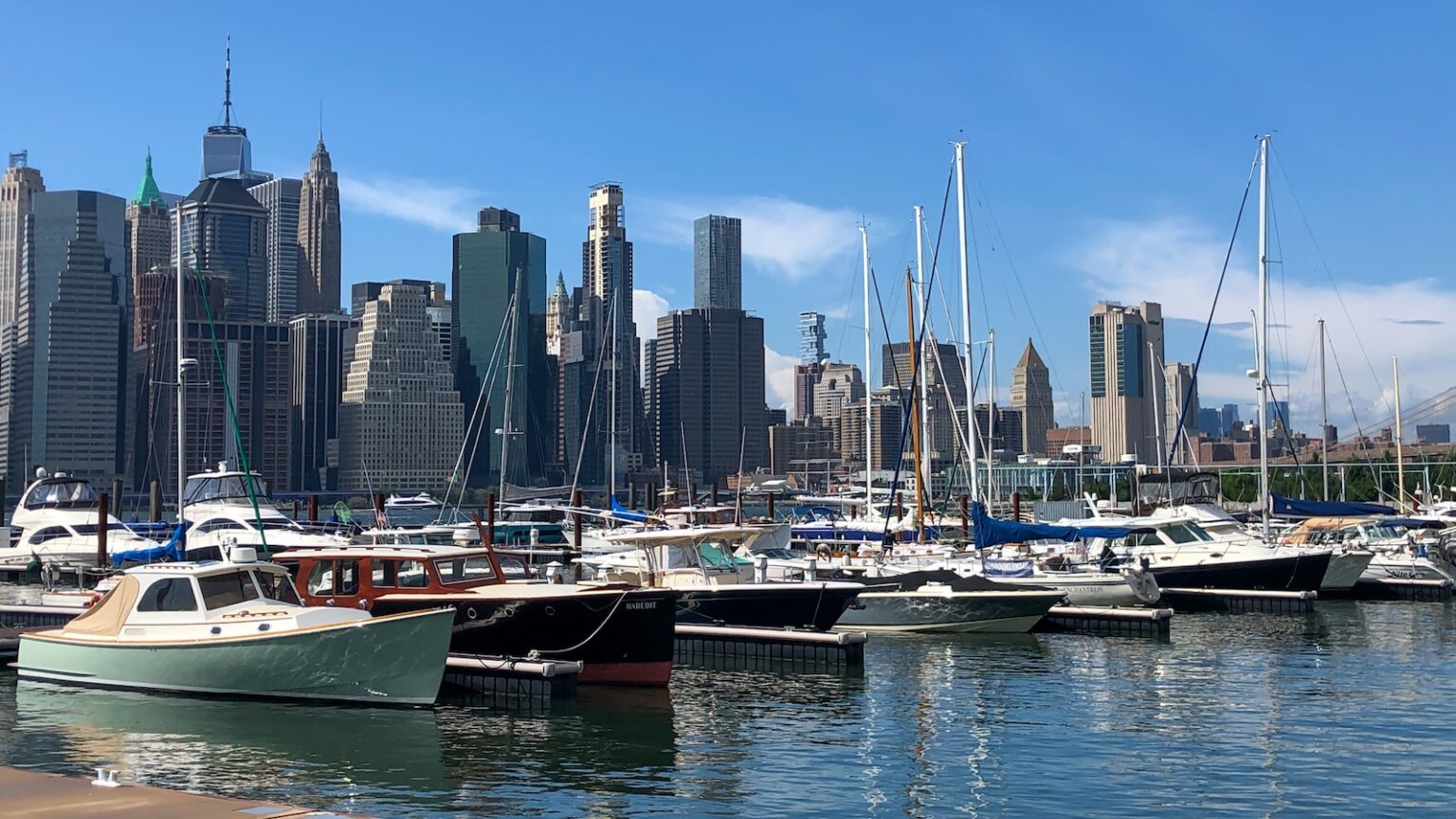New High-Tech Wave Attenuator Signals Smooth Sailing for NY’s Top-Tier One 15 Brooklyn Marina.
For those unfamiliar with boating on New York waters, the East River is as vibrant as Times Square, but it has characteristics akin to a tidal strait, which isn’t always welcoming.
The new One 15 Brooklyn Marina discovered this reality less than a year after its grand opening in 2016.
The collision of currents generating multi-directional momentum from the intersection of rivers and the Atlantic Ocean created chaos for the facility and the boats docked along the quays.
As a result, it became clear that an overhaul was necessary!
Unfortunately, the marina’s initial protective barrier was only deflecting part of the wave energy back into the river and failed to lessen the tidal impact crashing through the gaps under the piers. A redesign incorporating extensive sustainable elements was needed to prevent any further irreparable damage.
One 15 Brooklyn Marina: Tide and Traffic Troubles
However, the tides are only part of the picture. The river is an amalgam of moving crafts pursuing their own paths with distinct “incoming and outgoing turning points.” For instance, the daily procession comprises: commercial freighters and tugboats; jet skiers chasing the wake of various recreational boats and sightseeing vessels filled with selfie-takers; the FDNY and PDNY racing between stops; and let’s not forget the continuous (and I mean continuous) low-flying helicopters shuttling busy CEOs back and forth to their meetings in Manhattan.
Yet, as chaotic as the above sounds, the real turning point occurred in 2017 when high-speed ferries increased their service frequency, exacerbating the persistent rolling wave action. LITERALLY!
An engineering team was enlisted, and their high-tech analysis and testing on how to best mitigate these volatile conditions led to the installation of steel wave attenuators set on deep-draft steel barges.
This combination softens the marina basin with gentler waves by reducing the size and energy of incoming swells and eliminating unnecessary wave motion.
Saved by Steel
One 15 Brooklyn Marina CEO Estelle Lau tells me, “The marina was initially designed with all Seaflex anchoring, but we found that the increasing number of boats and ferries on the waterfront were too powerful for the system. So we constructed the new attenuators using the same principle as the New York ferry landings, installing piles to further reinforce the system – effectively doubling the width and tripling the depth of the attenuator.”
The Singapore-based SUTL Group, renowned for its stunning marinas across Asia, along with the consulting firm TMS Waterfront, were charged with reconstructing the eight-acre facility, which now boasts 102 slips accommodating boats up to 300 feet, including deep-draft ocean-going superyachts. Since its reopening in May 2019, the $28 million multi-phase design project has received continuous praise and positive feedback; however, it faced a series of anticipated challenges along the way:
1- Addressing environmental concerns and obtaining all necessary permits became a lengthy process involving SBS, the Army Corps, the Environmental Agency, and the MTA (Metropolitan Transit Authority).
2- The position of the R subway train running beneath the facility necessitated reducing the number of piles near the tunnels and prohibited the use of anchoring and cables.
3- A sophisticated monitoring system had to be implemented to avoid affecting the tunnel areas during the pile-driving process along the attenuator, while taking all necessary precautions.
4- Disruptions to the summer operations at the marina had to be minimized.
The engineering team worked diligently to comply with the required rules and restrictions throughout this daunting infrastructure refurbishment. First, the large concrete blocks that were initially installed to anchor the docks were repurposed to the inside dock on the marina’s south side. Then, two 185-foot steel barges, named Little Bear One and Little Bear Two, along with Polaris, a sizable 300-foot barge with a 30-foot beam and a 10-foot draft, were anchored to the seabed. This was followed by ballasting down the attenuators on the piles and driving them into the bay.
A Cheerful Pier
Maintaining the panoramic view from the backdrop of Manhattan’s south side, thanks to the careful placement of the pilings, was another successful aspect of this high-profile project. Yet, there was even more to celebrate than just the view.
As the marina is home to the Community Dock, it offers a variety of affordable programs and activities that allow locals to engage one-on-one with the harbor, making it accessible for everyone, whether you’re a boat owner or not.

